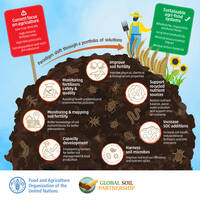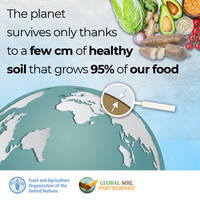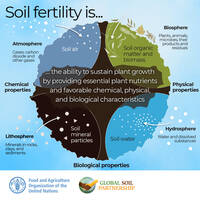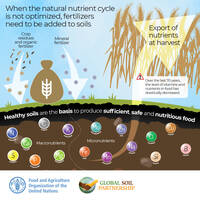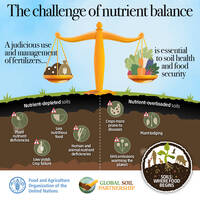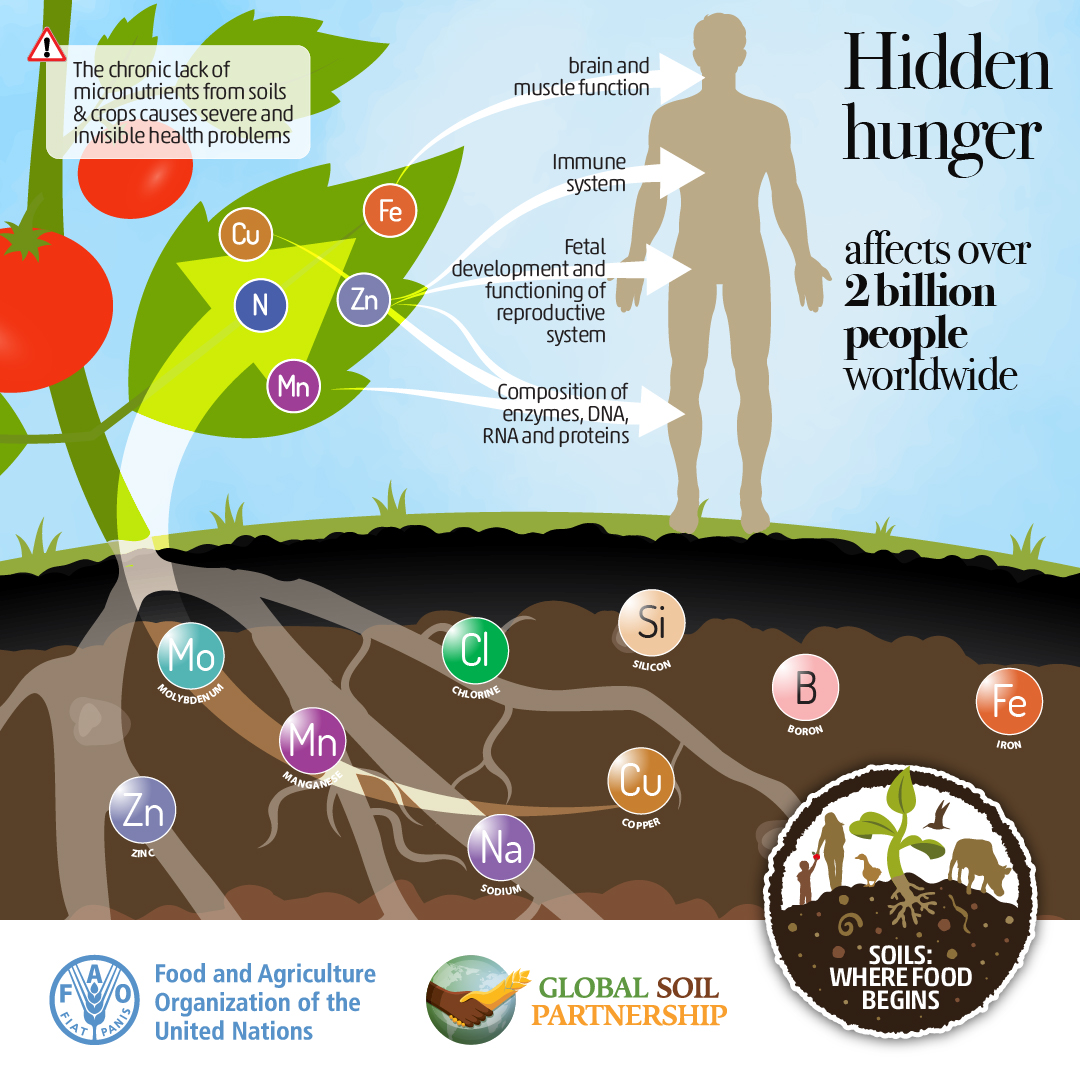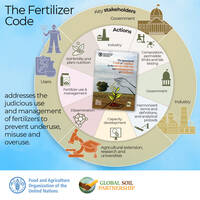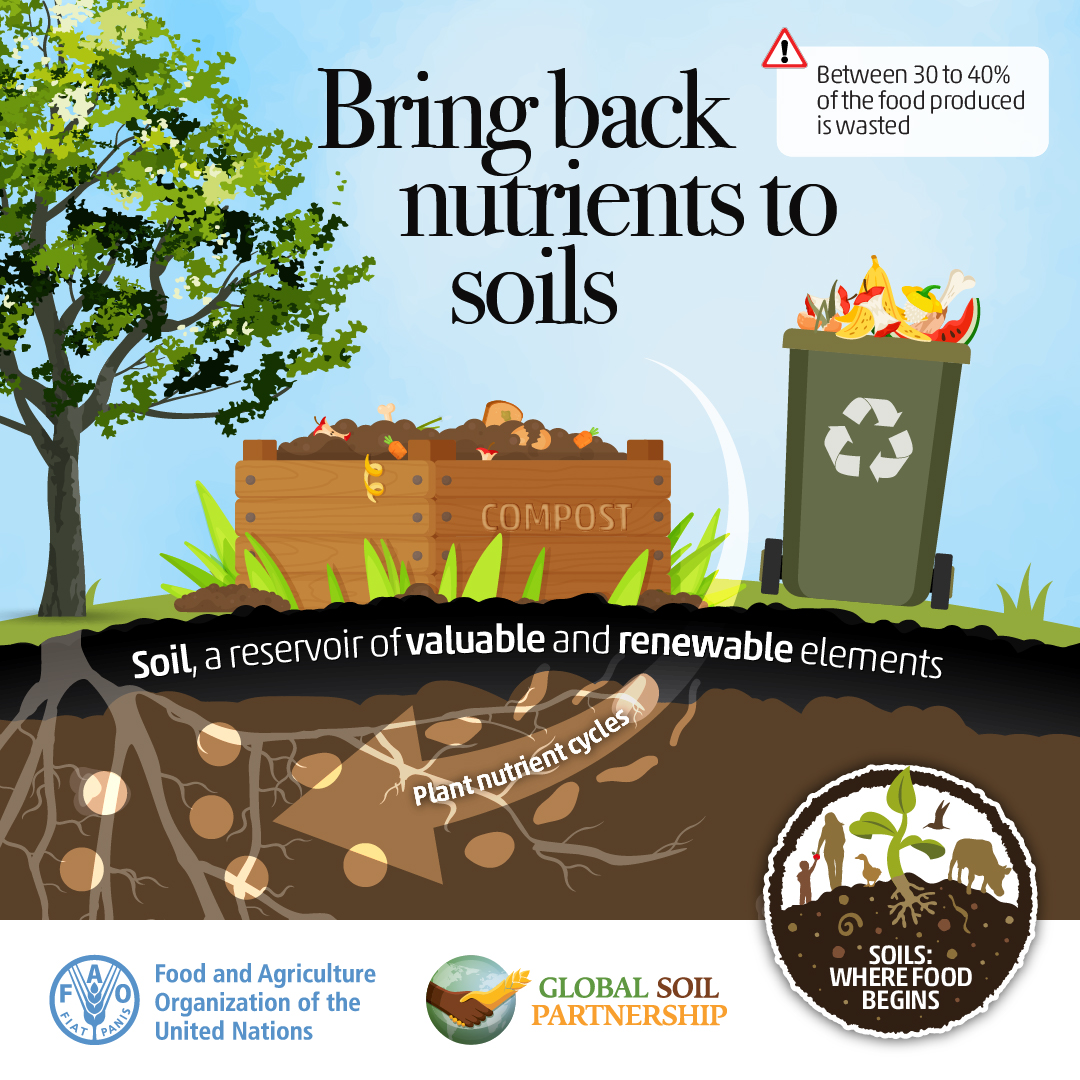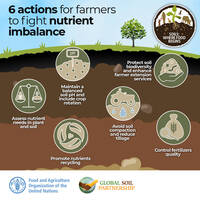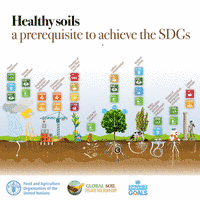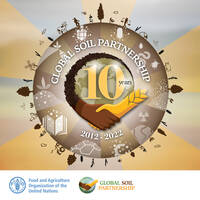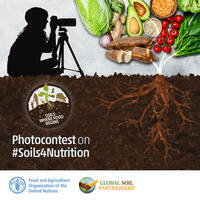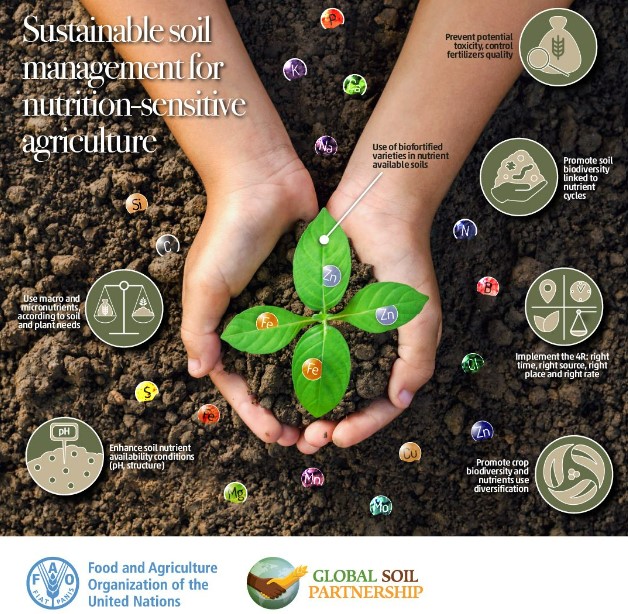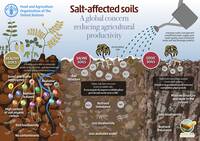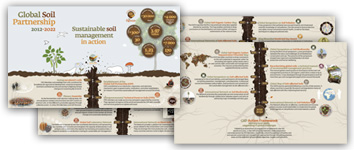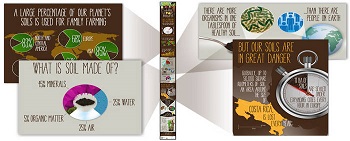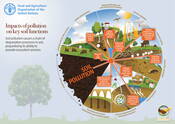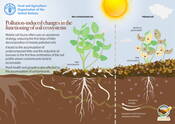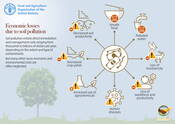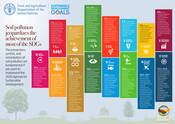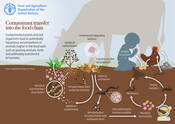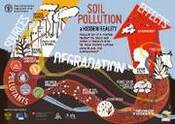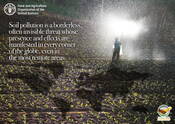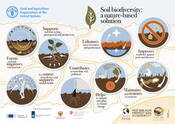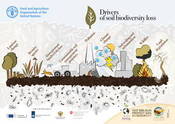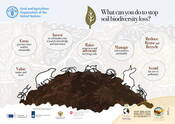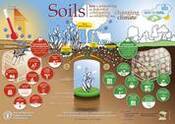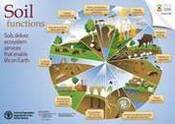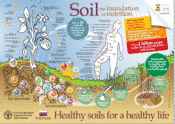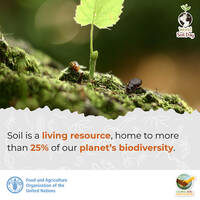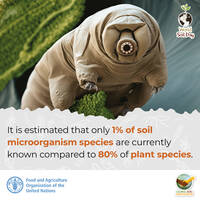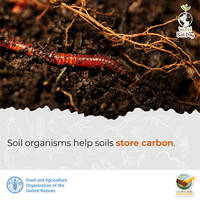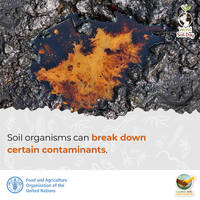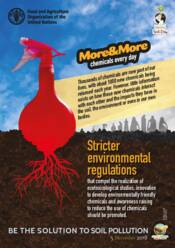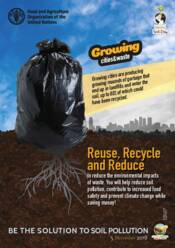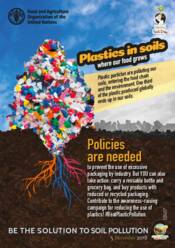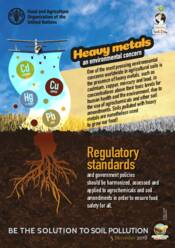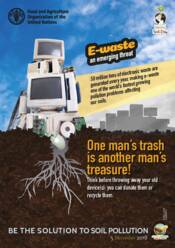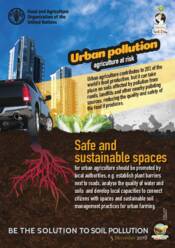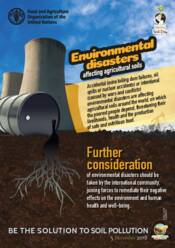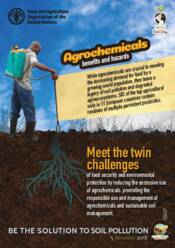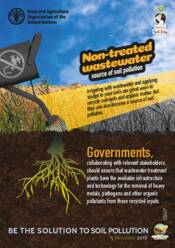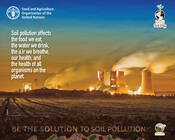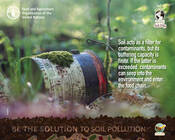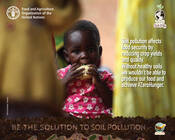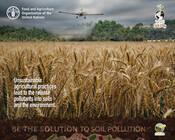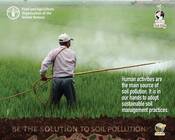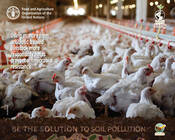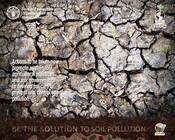Communication material
*When adding any soil material to your webpage, remember to link it to www.fao.org/world-soil-day/en/
Paradigm shift towards sustainable agrifood systems
Available in: EN
Six actions for farmers to fight nutrient imbalance
Six actions for farmers to fight nutrient imbalance: 1) Assess nutrients need in plants and soils; 2) Maintain a balanced soil pH and include crop rotation; 3) Promote nutrient recycling; 4) Avoid soil compaction and reduce tillage; 5) Protect soil biodiversity and enhance extension services; 6) Control fertilizers quality.
Soils and the SDGs
To what extent are soils related to the Sustainable Development Goals? Discover more.
The 10th anniversary of the Global Soil Partnership
Celebrate with us the important achievements of the past decade of action!
Download the English card here
Photo contest #Soils4Nutrition
Photo contest organized in the framework of the Global Symposium on Soils for Nutrition.
Available in: English
Soils and the SDGs
This infographic aims to raise awareness on soils and link healthy soils have with the UN Sustainable Development Goals (SDGs).
Salt-affected Soils: A global concern reducing agricultural productivity
Soils affected by salinity and sodicity undergo a rapid decline of health, losing their capacity for biomass production, natural filtration, carbon sequestration and other necessary ecosystem functions.
French | Spanish | Chinese | Russian | Arabic | Catalan | Galician | Portuguese | Hebrew
Global Soil Partnership timeline
Sustainable soil management in action
See the web version | Download PDF
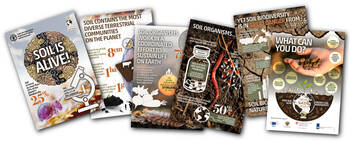
Soil is alive - The story of soil biodiversity
Soil contains the most diverse terrestrial communities on the planet.
See the web version | Download PDF
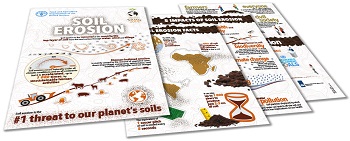
Stop soil erosion - 5 facts, impacts and actions
Soil erosion is the number 1 threat to our global soils.
See the web version
Download PDF:
French | Spanish | Chinese | Russian | Arabic
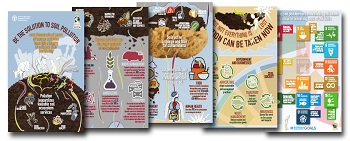
Be the solution to soil pollution
Over thousands of years of human activities have left a legacy of polluted soils worldwide.
See the web version
Where food begins
Healthy soils not only are the foundation for food, fuel, fibre and medical products, but they are also playing a key role in the carbon cycle, storing and filtering water, and improving resilience to floods and droughts.
See the web version
Download PDF:
French | Spanish | Chinese | Russian | Arabic
Other languages: Hungarian | German
Aboveground and belowground biodiversity: an inseparable interaction
The interaction between below and aboveground biodiversity, including several different animals, plants and bacteria that are part of this symbiotic relationship.

Soil pollution and phytoremediation
Some plants can uptake, remove and stabilize contaminants from the soil, through different mechanisms.
Impacts of soil pollution on key soil functions
Soil pollution causes a chain of degradation processes in soil, jeopardizing its ability to provide ecosystem services.
Pollution-induced changes in the functioning of soil ecosystems
Mobile soil fauna often uses an avoidance strategy, reducing the first steps of litter decomposition in heavily polluted soils.
Economic losses due to soil pollution
Soil pollution entails direct remediation and management costs ranging from thousands to billions of dollars per year, depending on the extent and type of contaminants.
Soil pollution jeopardizes the achievement of most of the SDGs
The prevention, control, and remediation of soil pollution are fundamental if we want to implement the 2030 Agenda for Sustainable Development.
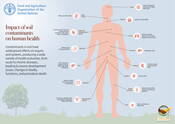
Impact of soil contaminants on human health
Contaminants in soil have widespread effects on organs and systems, producing a wide variety of health outcomes, from acute to chronic diseases, leading to severe development issues, changes in bodily functions, and premature death.
Contaminants tranfer to the food chain
Contaminated plants and soil organisms lead to potentially hazardous accumulations in animals higher in the food web such as grazing animals, birds and ultimately transferred to humans.
Soil pollution, a hidden reality
This poster presents in a nutshell the sources, degradation processes and effects of soil pollution on the environment, human health and food safety and security.
Soil pollution is borderless
Soil pollution is a borderless often invisible threat whose presence and effects are present in every corner of the globe.
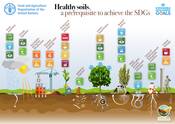
Healthy soils, a prerequisite to achieve the SDGs
The UN Sustainable Development Goals (SDGs), directly and indirectly address land and soil. Many of these SDGs cannot be achieved without healthy soils and a sustainable land use.
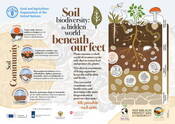
Soil biodiversity, the hidden world beneath our feet
Plants nurture a whole world of creatures in the soil, that in return feed and protect the plants.This diverse community of living organisms keeps the soil healthy and fertile.
French | Spanish | Chinese | Russian | Arabic Other languages: Catalan | Portuguese | Slovenian
Soils and pulses: symbiosis for life
The symbiotic and strategic alliance between soils and pulses contributes to improve soil health, adapt to and mitigate climate change, and ultimately to enhance food security and nutrition.
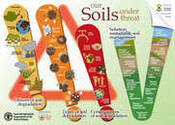
Soils under threat
Soils are under increasing pressure of intensification and competing uses for cropping, forestry, pasture, urbanization. These, combined with unsustainable management and climate extremes, cause degradation.
French | Spanish | Chinese | Russian | Arabic Other languages: Turkish | German | Thai | Georgian | Catalan | Latvian
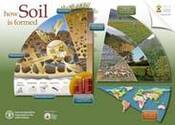
Soil formation
Formation of soil is a complex and long process which depends on 5 key formation factors. Soils around the world are very diverse and constitute a key element of our landscapes.
French | Spanish | Chinese | Russian | Arabic Other languages: Finnish | Swedish | German | Thai | Georgian | Catalan
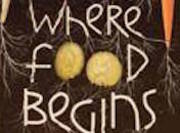
Where food begins
Healthy soils not only are the foundation for food, fuel, fibre and medical products, but they are also playing a key role in the carbon cycle, storing and filtering water, and improving resilience to floods and droughts.
العربية | 中文 | English | Français | Italiano | Русский | Portouguese | Español
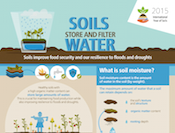
Soils store and filter water - Improving food security and our resilience to floods and droughts
Functional soils play a key role in the supply of clean water and resilience to floods and droughts.

Soils help to combat and adapt to climate change
Soils help to combat and adapt to climate change by playing a key role in the carbon cycle.

Soils are the foundation for vegetation
Healthy soils are crucial for ensuring the continued growth of natural and managed vegetation, providing feed, fibre, fuel, medicinal products and other ecosystem services such as climate regulation and oxygen production. Soils and vegetation have a reciprocal relationship.

Soils and Biodiversity
Soils host a quarter of our planet's biodiversity.Soil is one of nature's most complex ecosystems: it contains a myriad of organisms which interact and contribute to the global cycles that make all life possible.
French | Spanish | Chinese | Russian | Arabic Other languages: Hungarian

Healthy Soils are the Basis for Healthy Food Production
Healthy soils produce healthy crops that in turn nourish people and animals. Indeed, soil quality is directly linked to food quality and quantity.
French | Spanish | Chinese | Russian | Arabic Other languages: Turkish | Italian

Soil is a non-renewable resource. Its preservation is essential for food security and our sustainable future
Soil is a finite resource, meaning its loss and degradation is not recoverable within a human lifespan.
French | Spanish | Chinese | Russian | Arabic Other languages: Hungarian | Turkish | Italian | Indonesian

International Year of Soils 2015: Healthy soils for a healthy life (available soon)
Our soils are in danger because of expanding cities, deforestation, unsustainable land use and management practices, pollution, overgrazing and climate change.
French | Spanish | Chinese | Russian | Arabic Other languages: Czech | Turkish
Cards
Soil biodiversity
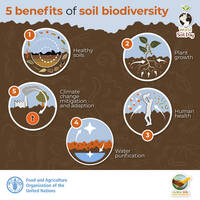
5 benefits of soil biodiversity
French | Spanish | Chinese | Russian | Arabic
Other languages: Portuguese | Thai
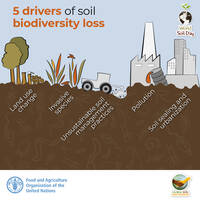
5 drivers of soil biodiversity loss
French | Spanish | Chinese | Russian | Arabic
Other languages: Portuguese
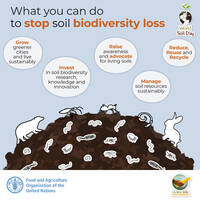
What can you do to stop soil biodiversity loss?
French | Spanish | Chinese | Russian | Arabic
Other languages: Portuguese
Soil pollution
Thematic factsheet

Soils store and filter water
Improving food security and our resilience to floods and droughts
Functional soils play a key role in the supply of clean water and resilience to floods and droughts. Water infiltration through soil traps pollutants and prevents them from leaching into the groundwater. Moreover, the soil captures and stores water, making it available for absorption by crops, and thus maximizing water use efficiency
Download PDF: High res | Low res
Official languages: French | Spanish | Chinese | Russian | Arabic

Soils help to combat and adapt to climate change by playing a key role in the carbon cycle
Healthy soils provide the largest store of terrestrial carbon. When managed sustainably, soils can play an important role in climate change mitigation by storing carbon (carbon sequestration) and decreasing greenhouse gas emissions in the atmosphere.
Download PDF: High res | Low res
Official languages: French | Spanish | Chinese | Russian | Arabic

Soils are the foundation for vegetation
which is cultivated or managed for feed, fibre, fuel and medicinal products
Healthy soils are crucial for ensuring the continued growth of natural and managed vegetation, providing feed, fibre, fuel, medicinal products and other ecosystem services such as climate regulation and oxygen production.
Download PDF: High res | Low res
Official languages: French | Spanish | Chinese | Russian | Arabic

A healthy soil is a living soil
Soils Host a Quarter of our Planet’s Biodiversity
Biological diversity or ‘biodiversity’ is described as “the variability among living organisms from all sources, whether terrestrial, aquatic or marine”. It includes the diversity within species (genetic diversity), between species (organism diversity) and of ecosystems (ecological diversity)
Download PDF: High res | Low res
Official languages: French | Spanish | Chinese | Russian | Arabic

Healthy soils are the basis for healthy food production
The most widely recognized function of soil is its support for food production
It is the foundation for agriculture and the medium in which nearly all food-producing plants grow. In fact, it is estimated that 95% of our food is directly or indirectly produced on our soils. Healthy soils supply the essential nutrients, water, oxygen and root support that our food-producing plants need to grow and flourish.
Download PDF: High res | Low res
Official languages: French | Spanish | Chinese | Russian | Arabic
Other languages - Italian - High res | Low res | Bahasa Indonesia - High res | Low res

Soil is a non-renewable resource
Its preservation is essential for food security and our sustainable future
Soil is a finite resource, meaning its loss and degradation is not recoverable within a human lifespan. As a core component of land resources, agricultural development and ecological sustainability, it is the basis for food,feed, fuel and fibre production and for many critical ecosystem services. It is therefore a highly valuable natural resource, yet it is often overlooked...
Download PDF: High res | Low res
Official languages: French | Spanish | Chinese | Russian | Arabic

